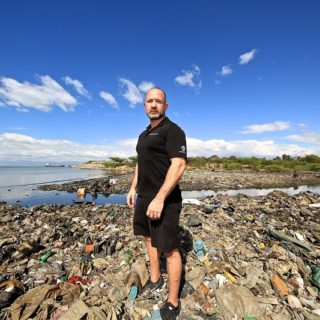UN Environment worked closely with the UK government to organize a breakfast at April’s Commonwealth summit, where British Environment Secretary Michael Gove met leaders from the world of sport, including Premier League executives, to urge them to search for innovative solutions to the problem of plastic pollution.
Major sporting events can generate up to 750,000 plastic bottles apiece, so the pressure is on to clean up the industry and use sport’s global reach to raise awareness among fans.
Here are 10 examples of sports and athletes that have risen to the challenge.
1) SAILING: Turning the tide on plastic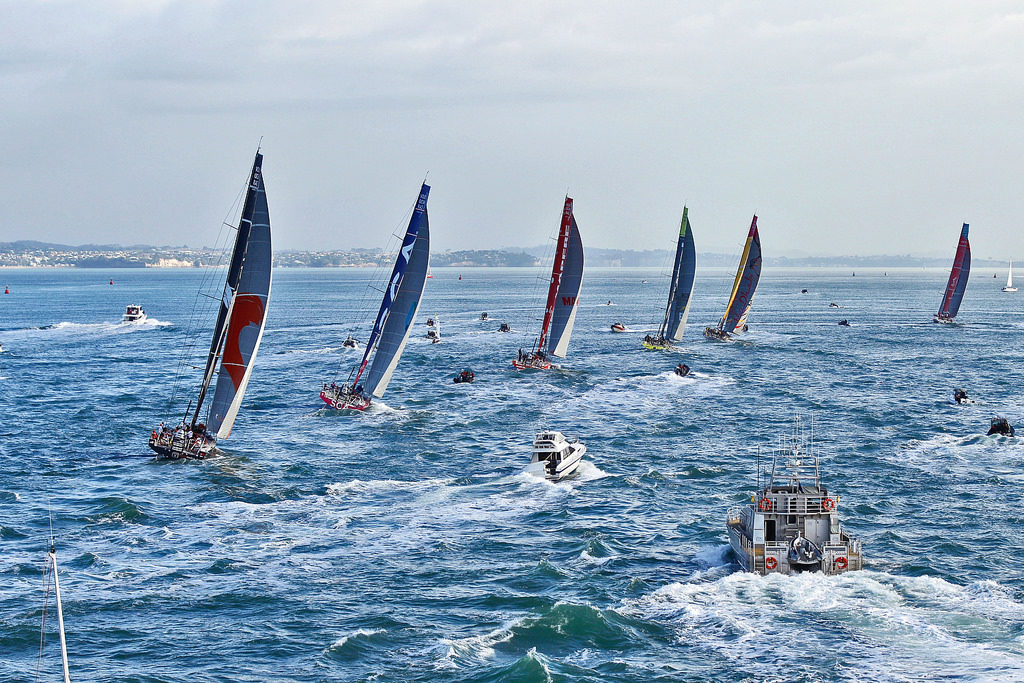 (Bengt Nyman/Volvo Ocean Race/Flickr)
(Bengt Nyman/Volvo Ocean Race/Flickr)
It’s the race of a lifetime and the cause of a generation. The Volvo Ocean Race sees seven teams race 45,000 nautical miles around the world over eight months in a gruelling competition that aims to raise awareness of sustainability issues, including the threat posed by marine plastic pollution. This year, the Turn the Tide on Plasticyacht is competing to highlight UN Environment’s Clean Seas campaign.
Skippered by Briton Dee Caffari, Turn the Tide on Plastic is gathering data on microplastics as part of the Volvo Race’s Science Programme.
“With the science experiments we’re carrying out on board the boat, we are able to get raw data on the microplastics,” Caffari said. “We are collecting reference data that people can’t ignore so, hopefully, in the future, we’ll see a change in the amount of microplastics in the water.”
2) CRICKET: Going green in India and striking out straws in the UK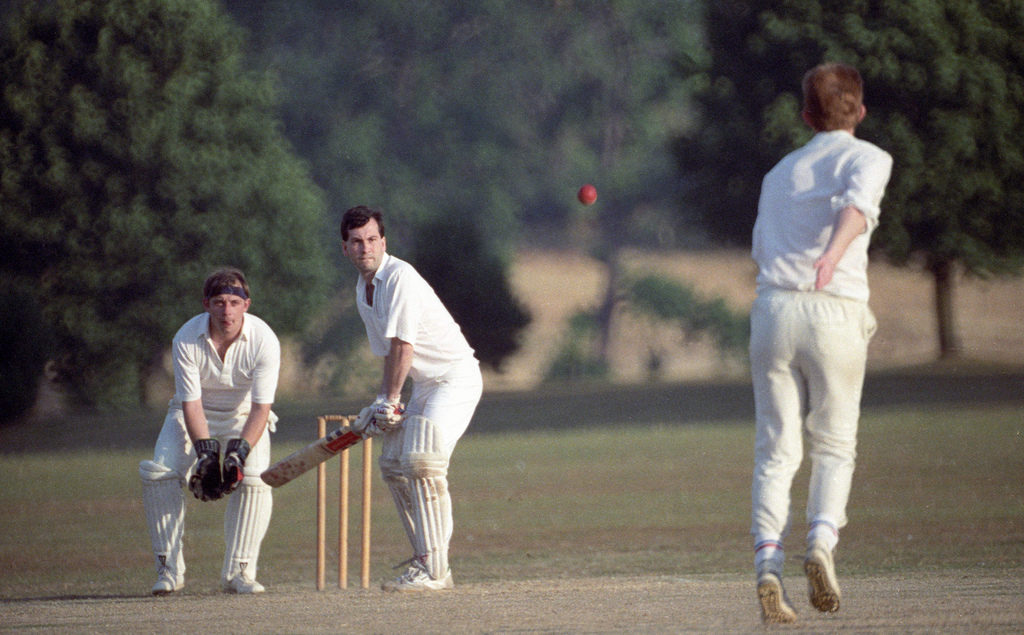 (Lutmans/Flickr)
(Lutmans/Flickr)
In Bengaluru and Indore cities in India, a new “green protocol” is being put into play. In Bengaluru, Chinnaswamy stadium has adopted a zero-waste policy, using an army of green-clad volunteers to sort waste and educate spectators during Indian Premier League matches. Around 40,000 fans attend each match in the stadium, generating 3-4 tonnes of mixed waste each time. Because the waste is not separated, it has to be sent to the landfill.
Under a new “green protocol”, separate bins will be kept for dry and wet waste and volunteers will make sure rubbish ends up in the right place. Wet waste will be sent to the biogas or composting plant while dry waste will be recycled. Food vendors have been asked to use areca leaf or corn starch plates.
In Indore, an exhaustive Green Protocol details 72 ways to reduce, reuse and recycle of garbage, including plastic items, in the stadium. The stadium aims to be plastic-free by 2019. A number of partners, including the district and municipal administrations, cricket teams and UN Environment, have contributed to this strategy.
In the UK last year, London’s Kia Oval cricket grounds said it aimed to become completely plastic-free by 2020. The venue has banned the use of plastic straws this season, introduced compostable coffee cups, and is phasing out the use of plastic bags in the club shop. Last year, Kia Oval introduced eco-friendly cups to replace its plastic pint glasses. It also installed 20 free water fountains and taps and provided 20,000 limited edition refillable bottles.
3) FOOTBALL: Spurring others to act (Jan S0l0/Flickr)
(Jan S0l0/Flickr)
Tottenham Hotspur may not win the Premier League this year, but the English club is top of the table in tackling plastic waste. In April it said it would phase out single-use plastics in its new stadium, due to open next season. The aim is to eliminate plastic straws, stirrers, cutlery and all plastic disposable packaging for these items.
In the United States, Adidas and Major League Soccer released special kits, made out of Parley Ocean Plastic, for matches played during the weekend of Earth Day. All 23 clubs wore the Adidas Parley 2018 MLS shirts, which are made from technical yarns created from plastic waste found on beaches and in coastal communities.
4) RUGBY: Twickenham converts disposable cups to souvenirs
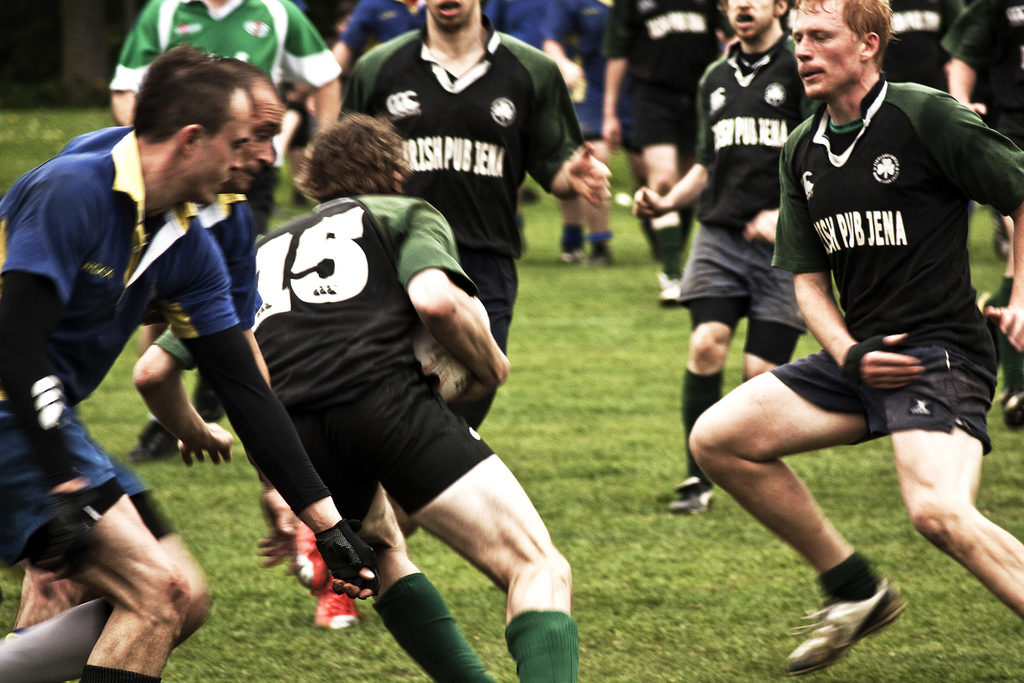 (Tom Triebel/Flickr)
(Tom Triebel/Flickr)
Twickenham, the home of the English rugby team, has introduced a reusable Fan Cup to replace the flimsy, disposable cups that were previously used during games.
When customers buy their first drink, they are charged an additional £1 refundable deposit. When they return to the bar with the cup, the price reverts to the advertised cost. At the end of the day, fans can keep the cup as a souvenir or return it and get their deposit back.
Previously, around 140,000 pints of beer could be served during an international match meaning 140,000 cups were likely to be thrown away.
5) ATHLETICS: London seeks answers to marathon plastic bottle conundrum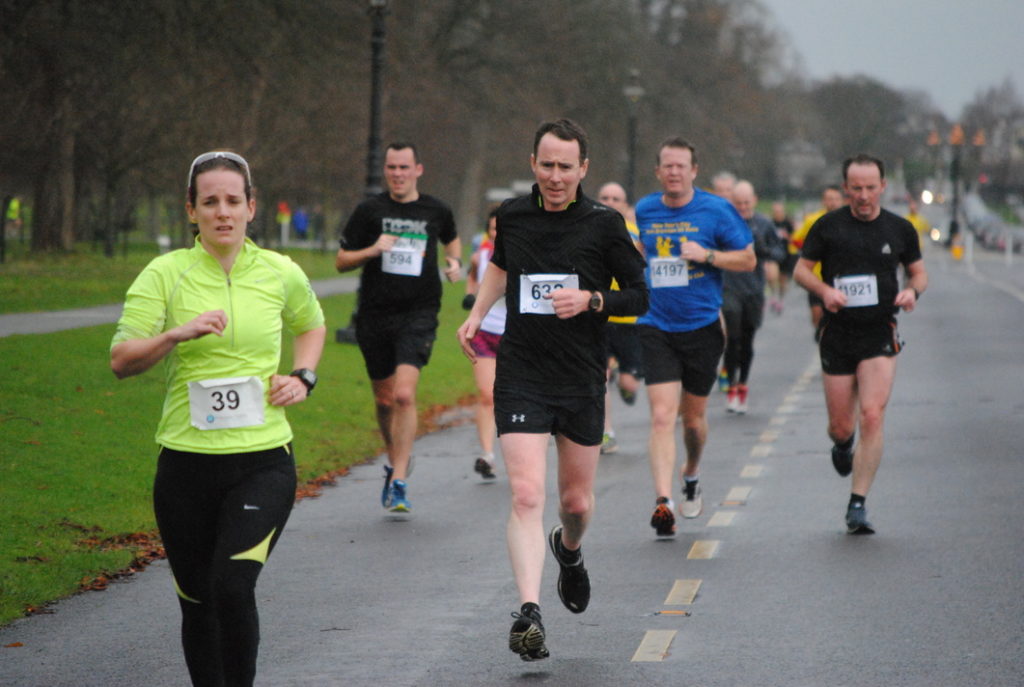 (Peter Mooney/Flickr)
(Peter Mooney/Flickr)
This year’s London marathon was the hottest on record but it was also unique because organizers trialled the use of compostable cups to reduce the number of plastic bottles that typically litter the streets after the event. Around 90,000 cups were placed at three drink stations along the route, as well as 760,000 plastic bottles for runners. The bottles were all to be recycled after the race, and the use of the cups will be reviewed.
6) COMMONWEALTH GAMES 2018: Australia’s Gold Coast bursts plastic balloon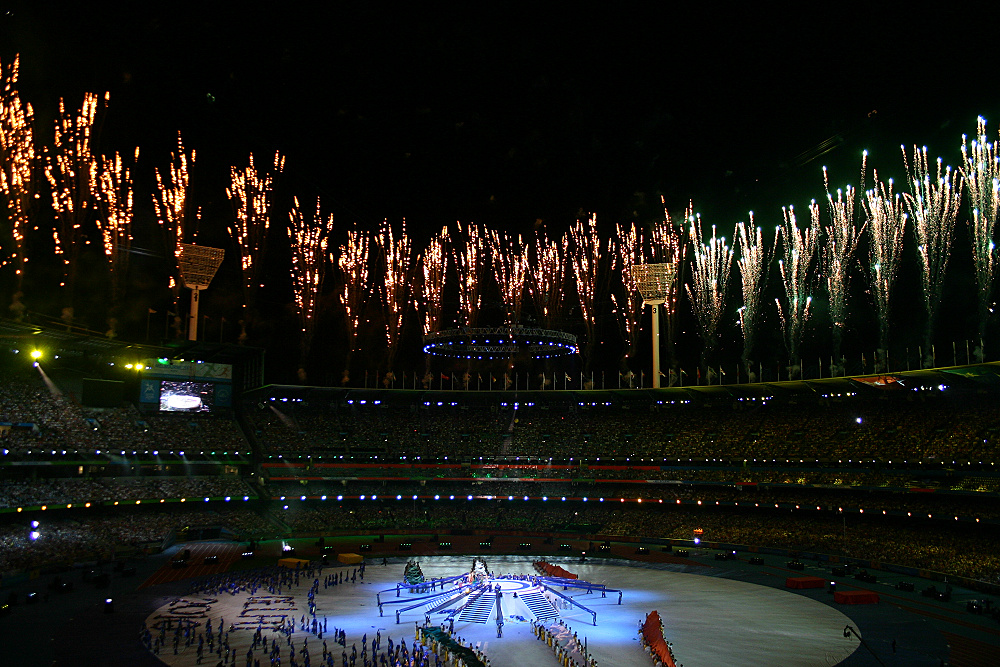 (Spitfirelas/Flickr)
(Spitfirelas/Flickr)
The Commonwealth Games were held on Australia’s Gold Coast in April and organizers were determined to do everything they could to protect this beautiful region and the surrounding waterways and oceans. Helium balloons were banned from the event and spectators were encouraged to bring their own transparent bottle to refill at water points around the grounds.
7) BASEBALL: White Sox step up to the plate to ban straws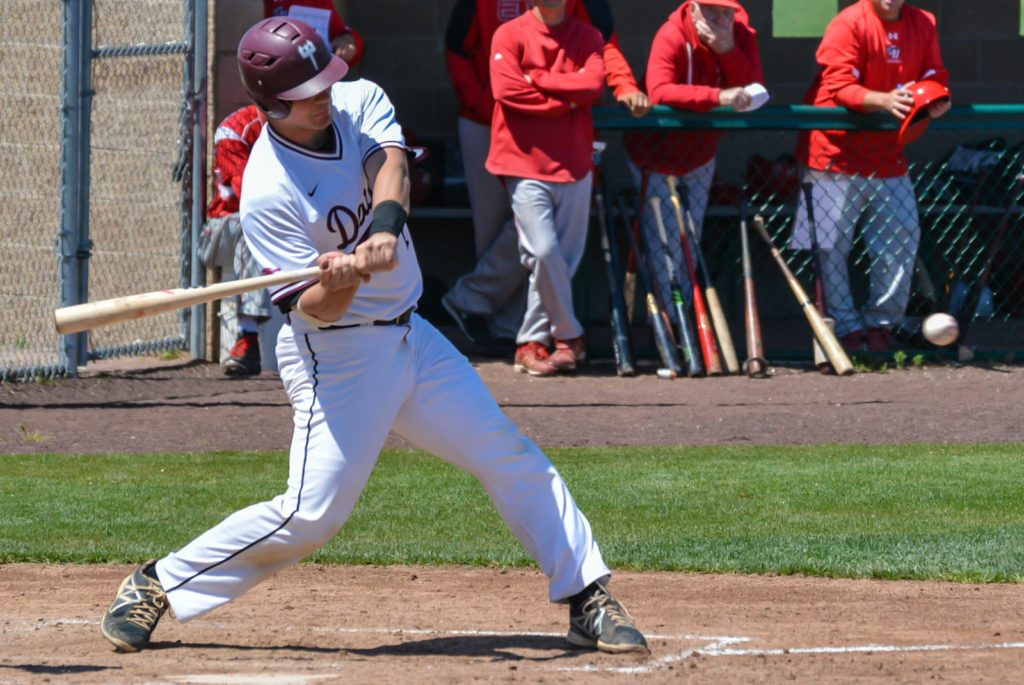 (Peter Miller/Flickr)
(Peter Miller/Flickr)
In April, Chicago’s White Sox became the first Major League Baseball team to serve drinks without single-use plastic straws as part of Shedd Aquarium’s “Shedd the Straw” initiative.
The team said the move would take more than 215,000 straws out of play over the season.
8) SWIMMING: Taking on the Pacific in the name of science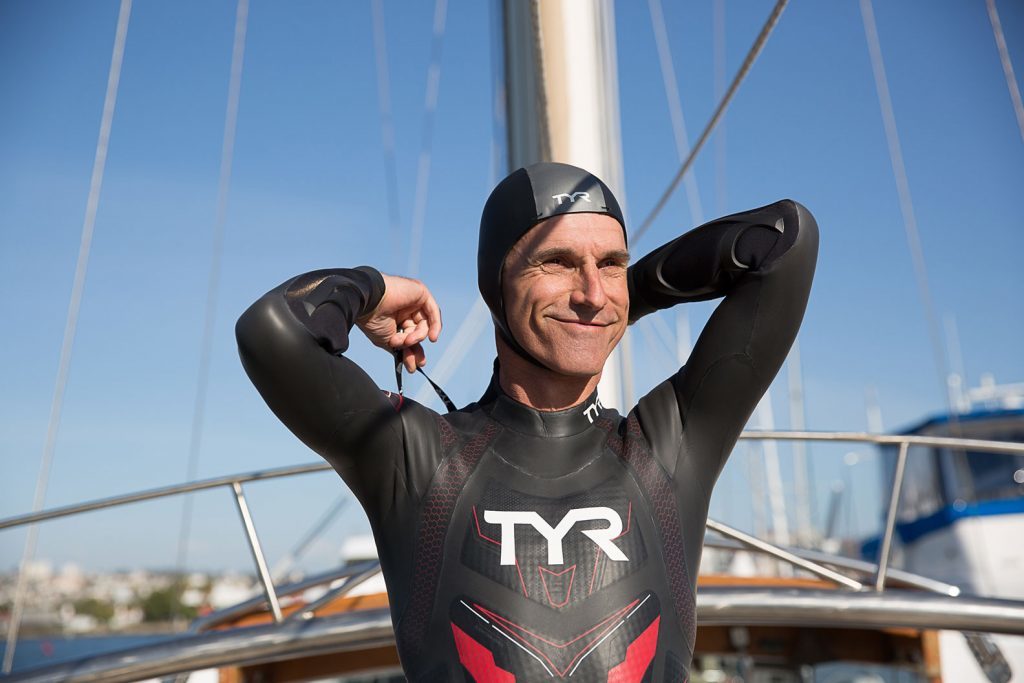 (Ben Lecomte)
(Ben Lecomte)
At 8,900 km, it’s no wonder it’s being called the Longest Swim. Adventurer and activist Ben Lecomte will set off in late May to swim from Tokyo to San Francisco and all in the name of science and sustainability. Lecomte’s odyssey will take him through the Great Pacific Garbage Patch, a raft-like mass of waste three times the size of France.
Lecomte and his support crew will contribute to eight research programmes during the swim, covering everything from plastic pollution to currents and radiation. Using a neuston net and water samples, the crew will make daily collections of marine microplastics to help researchers learn more about these tiny pollutants that are finding their way into our food chain.
9) DIVING: UAE diving enthusiasts go deep to clean sea bed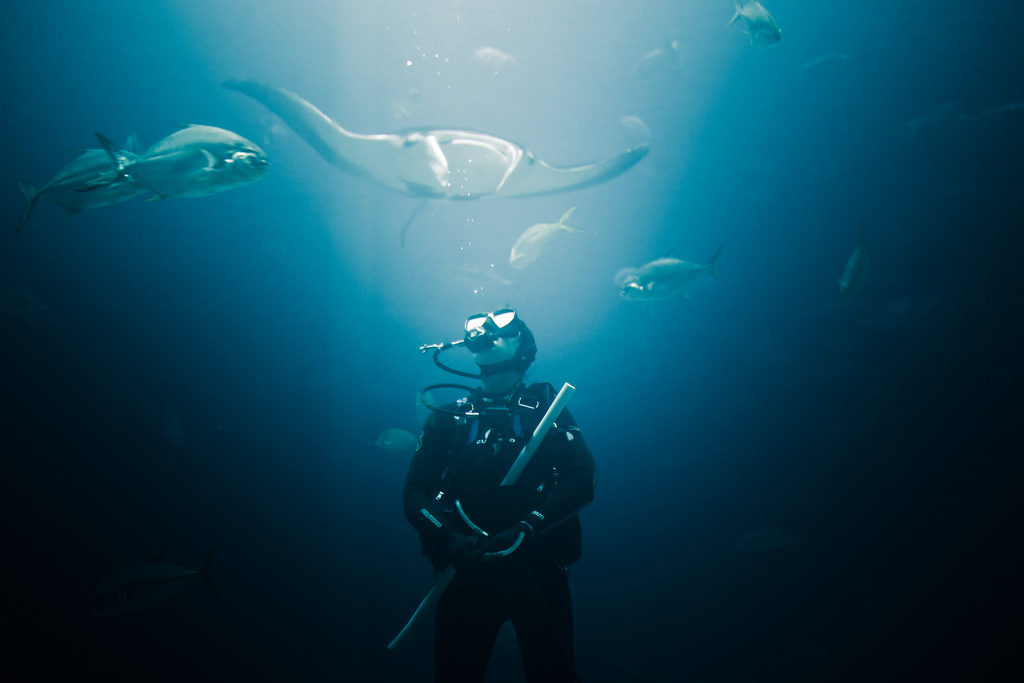 (Basheer Tome/Flickr)
(Basheer Tome/Flickr)
In the United Arab Emirates, a group of deep-sea divers has been collecting tonnes of rubbish from the floor of the Arabian Sea to raise awareness of the damage caused by plastic waste while also documenting marine life in the area. Mohammad Falasi, a marine biologist, set up the team after he found the sea floor was covered with trash. Now he and his friends conduct clean-ups at the weekend, collecting plastic, metal, glass, ceramics, rubber, wood and charcoal.
10) PLOGGING: The new plastic-battling fitness craze
You don’t have to be an elite athlete to join the battle against plastics. You could try “plogging”. The Swedish trend, which involves picking up litter while you jog, is catching on and there will be plogging events across the globe on World Environment Day on June 5. The name comes from combining the Swedish word “plocka”, to pick with “jogga”, to jog.
The Clean Seas campaign is keen to help collaborate with any sport looking to make a difference on plastic pollution. Do get in touch by emailing CleanSeas@un.org
Published on 05/30/2018





